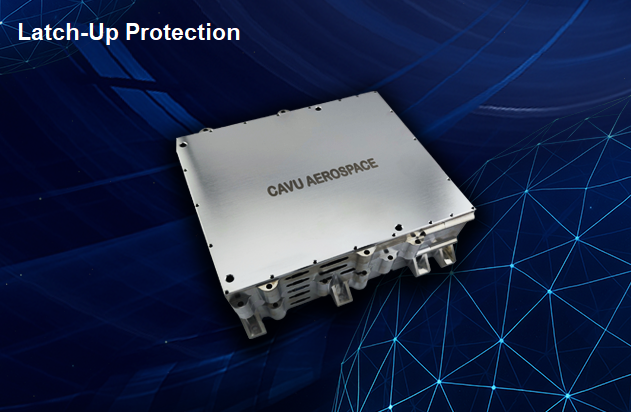Latch-up in CMOS technology is caused by ionizing particles (e.g., heavy ions) creating parasitic paths between power and ground, often forming a parasitic SCR (thyristor structure). Once triggered, this path can sink significant current and damage the device unless interrupted quickly.
To protect against this, an LCL circuit is used. It typically relies on:
- Comparator 1: Detects an overcurrent condition.
- Comparator 2 + Timer: Measures how long the overcurrent persists.
If the current exceeds a defined threshold and lasts longer than the allowed duration, the circuit shuts off the output.
Here is a discrete representation of such a protection mechanism, built using standard analog building blocks:

While this approach offers flexibility, we more commonly recommend integrated devices for reliability and compactness, especially where flight heritage is important.
Flight-Proven Integrated Solutions
For rail protection, we typically consider the following radiation-tested parts:
- TI TPS25940A/L – Excellent for sub-12V rails (3.3V, 5V, 12V); integrates current limit, fault timer, undervoltage/overvoltage, reverse blocking. SEL-free up to 87 MeV·cm²/mg, tested up to 50 krad(Si).
- ADI/MAX17523 – For 12V–24V range; includes robust protection and is TID and SEL tested.
- ADI/LTC4222, LTC4361 – Flexible solutions for higher voltages, especially 24V rails; require external N-FETs for higher power levels.
- MAX14572EUD+ – Accurate OVP/OCP controller with external FET option for thermal/power optimization.
For higher power rails (24V/48W), most devices require external FETs. The choice of FET is application-dependent, considering layout, mechanical constraints, thermal management, and assembly processes.
Background and Heritage
We were among the first teams to evaluate the TI TPS25940x family under space radiation conditions, and the parts have performed exceptionally well. They offer a compact, reliable solution for current-limited protection with minimal external components – ideal for small spacecraft or tight board space.
For higher current/power rails, especially at 24V, we recommend solutions with external FETs to scale thermals and dimensions independently of the controller. These designs offer better customization for your specific constraints.


